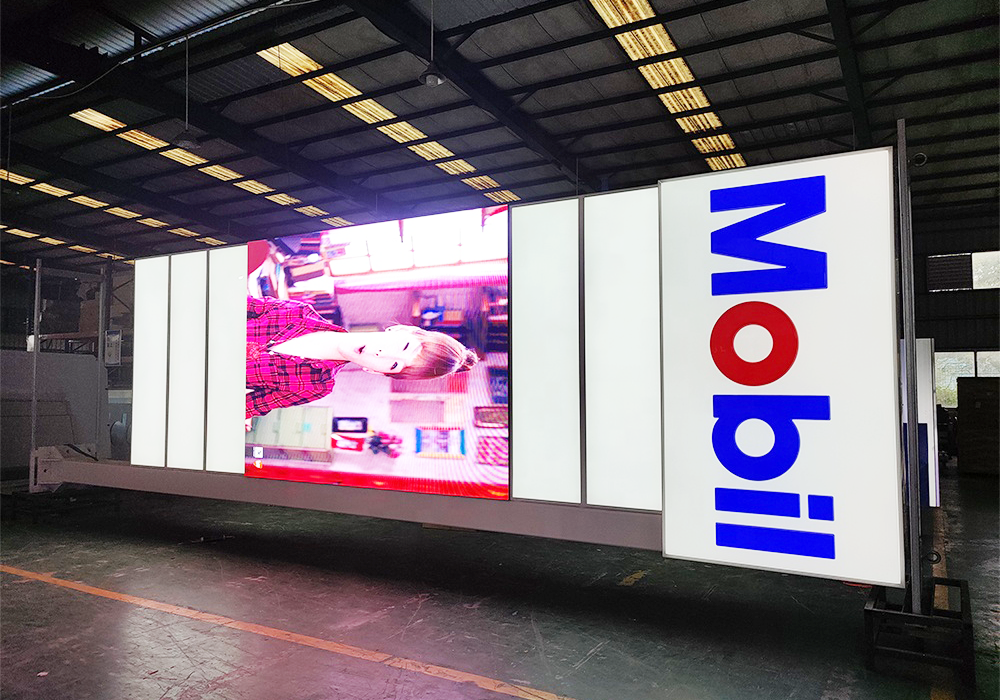Critical Exterior Signage Elements That Impact Gas Station Success
The exterior signage of a gas station serves as more than just a visual marker—it's a crucial business asset that directly influences customer attraction and brand recognition. During rebranding initiatives, station owners frequently focus on the obvious elements while overlooking subtle yet impactful details that could make or break their investment. Understanding these often-missed aspects can mean the difference between a mediocre rebrand and one that drives significant business growth.
Many gas station owners rush through the rebranding process, eager to display their new identity. However, this haste often results in overlooking critical elements that could affect visibility, compliance, and customer experience. Let's explore the key areas that deserve more attention during a gas station's exterior signage transformation.
Illumination and Visibility Considerations
Strategic Lighting Placement
The effectiveness of exterior signage at a gas station heavily depends on proper illumination. Many owners focus solely on the main pylon sign while neglecting other crucial lighting aspects. The positioning of light sources, their intensity, and the interplay between different illuminated elements can significantly impact visibility. Consider how shadows cast by nearby structures might affect sign readability and ensure consistent brightness across all branded elements.
Light pollution regulations and energy efficiency requirements also play a vital role in signage illumination decisions. Modern LED solutions offer superior visibility while maintaining cost-effectiveness, yet many station owners fail to factor in the long-term benefits of investing in quality lighting systems during their rebrand.
Nighttime Visibility Optimization
After sunset, your exterior signage faces unique challenges that require specific attention. The contrast between illuminated elements and dark surroundings needs careful calibration to ensure optimal visibility without creating glare that might disturb neighboring properties or passing drivers. Consider how different weather conditions affect nighttime visibility and plan accordingly with appropriate materials and lighting solutions.
Regular maintenance schedules for illuminated signs often get overlooked during rebranding planning. Establishing a proactive maintenance routine ensures consistent visibility and prevents unexpected outages that could impact business.
Material Selection and Environmental Factors
Weather-Resistant Components
The choice of materials for exterior signage dramatically influences its longevity and appearance. UV-resistant coatings, rust-proof metals, and water-resistant sealants are crucial elements that sometimes get sacrificed for cost savings. However, investing in quality materials during a rebrand pays dividends through reduced maintenance costs and extended sign life.
Climate-specific considerations often go unaddressed during material selection. Coastal locations require different materials than inland sites, and areas with extreme temperature variations need specially engineered solutions to prevent warping or damage.
Environmental Impact Assessment
Local environmental factors can significantly affect exterior signage performance. Wind load calculations, drainage considerations, and exposure to elements require thorough analysis. Many station owners overlook how their location's specific environmental conditions might impact their signage over time.
Sustainable materials and energy-efficient options are increasingly important in modern rebranding projects. Consider how your material choices align with environmental regulations and consumer expectations regarding corporate responsibility.
Compliance and Regulatory Requirements
Local Code Adherence
Zoning regulations and local signage codes vary significantly between jurisdictions. During a rebrand, it's crucial to verify current compliance requirements, as regulations may have changed since the original signage installation. Many owners assume their existing sign footprint automatically complies with new standards, which isn't always the case.
Permit requirements and approval processes can be complex and time-consuming. Building these into the project timeline early helps prevent costly delays and modifications after installation begins.
Safety Standards Implementation
Safety considerations extend beyond basic structural integrity. Proper grounding for illuminated signs, emergency shut-off accessibility, and clear visibility of safety information are critical elements that require careful planning. Regular safety audits and maintenance protocols should be established during the rebranding process.
Emergency response requirements often influence signage placement and design. Ensure that new branding elements don't obstruct important safety features or emergency access points.

Brand Consistency and Customer Experience
Visual Hierarchy Management
Creating an effective visual hierarchy ensures that customers can quickly locate and understand important information. Price displays, brand elements, and wayfinding signs must work together cohesively. Many owners focus on individual elements without considering their collective impact on customer experience.
Digital elements integration requires careful planning to maintain brand consistency while leveraging modern technology. Consider how digital price signs and LED displays complement traditional signage elements.
Customer Flow Optimization
Signage placement significantly influences traffic flow both on and off the property. Clear directional indicators and entry/exit markers help prevent confusion and congestion. Consider how various approaches to your location affect sign visibility and customer navigation.
The interaction between vehicle and pedestrian traffic requires careful consideration in signage placement. Ensure that all customer types can easily navigate your location while maintaining safety and efficiency.
Frequently Asked Questions
How does proper exterior signage impact fuel sales volume?
Effective exterior signage can increase fuel sales by 15-30% through improved visibility and customer attraction. Clear, well-lit price displays and brand elements help drivers make quick decisions about where to stop, especially during nighttime hours or adverse weather conditions.
What is the typical lifespan of gas station exterior signage?
Quality exterior signage typically lasts 7-10 years with proper maintenance. However, environmental factors, material quality, and maintenance frequency can significantly impact longevity. Regular inspections and proactive maintenance can extend sign life by several years.
How often should exterior signage be evaluated for updates or replacement?
Conduct comprehensive signage evaluations annually, with minor inspections quarterly. This helps identify wear and tear, compliance issues, or branding inconsistencies before they become major problems. Technology advances and changing consumer expectations may also necessitate updates more frequently than traditional replacement cycles.

